The NBA draft early-entry withdrawal deadline has (finally) come and gone, allowing us to truly get a complete feel for the 2020-21 college basketball landscape. The biggest winners of deadline day were Baylor and Illinois, which has created a massive shuffle at the top of the rankings.
With Baylor getting Jared Butler and MaCio Teague back, the Bears move to the top of the preseason rankings. There's a tier of three teams atop the rest of the country this season, with Baylor, Villanova and Gonzaga separating themselves from the pack -- on paper, at least. But Baylor will have the most continuity from a season ago, while Villanova and Gonzaga lose arguably their best players from last season.
Illinois' inside-outside tandem of Ayo Dosunmu and Kofi Cockburn moves the Fighting Illini from outside the top 30 to a spot inside the top-10 -- and makes the Big Ten even more fascinating entering the season. The league now has three teams in the top seven of these rankings, with Michigan State knocking on the door of the top 10.
With the Pac-12 announcing Tuesday that it was canceling all sports until Jan. 1 -- including men's basketball -- it throws a wrinkle into the rankings. But most conference officials around the country have been expecting a delayed and condensed season, one that doesn't start until January and includes no nonconference games. So these rankings are factoring in a season starting on Jan. 1, 2021. If things change, we'll reassess.
It's also worth noting that the NBA's early-entry deadline is Aug. 17. (The NCAA's was the one that expired on Aug. 3.) So there is still some concern that players -- particularly ones in the Pac-12 -- who announced their returns earlier this month could still decide to turn pro. Regardless, there will still be personnel moves between now and the start of the season (whenever that ultimately ends up being), with waivers being approved or denied, but we can now really start to look ahead to the 2020-21 season. And this is what it looks like coming out of the deadline.
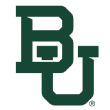
1. Baylor Bears
Previous: 3
Scott Drew was the big winner of the withdrawal deadline, receiving good news from both Jared Butler and MaCio Teague. Both guards decided to return to Waco and will once again make up two-thirds of arguably the nation's best backcourt. Butler will be a preseason All-American, and Teague should be a consistent scorer on the wing. More importantly, the return of two starters will give Drew even more continuity on the defensive end, where Baylor was one of the most dominant teams in the country last season. Davion Mitchell and Mark Vital are two of the elite individual defenders in college basketball and the Bears ranked in the top five nationally in defensive efficiency -- allowing more than one point per possession in only four of their first 25 games last season. While the perimeter is loaded, Drew would love to get a bit more production from the interior, namely Tristan Clark, who hopes to return to his 2018-19 form before an injury-riddled 2019-20 campaign.
Projected starting lineup:
Jared Butler (16.0 PPG, 3.1 APG)
Davion Mitchell (9.9 PPG, 3.8 APG)
MaCio Teague (13.9 PPG, 4.6 RPG)
Mark Vital (6.1 PPG, 6.2 RPG)
Tristan Clark (4.0 PPG, 2.4 RPG)

2. Villanova Wildcats
Previous: 2
Saddiq Bey decided long ago that he was going to enter the NBA draft and forgo his final two seasons at Villanova, so that has been factored into the Wildcats' rankings for a few months. It will be a difficult loss to overcome, as Bey was blossoming into one of the best players in the Big East down the stretch of the season, scoring at least 20 points in six of his final 10 games. He also led the league in 3-point shooting in conference play, knocking down better than 48% of his outside shots. That said, Jay Wright has his other four starters back and multiple players should be ready to fill Bey's shoes. Former five-star recruit Bryan Antoine barely played as a freshman but should be healthy as a sophomore and ready to make an impact as a scorer. Caleb Daniels averaged nearly 17 points at Tulane two seasons ago, and Cole Swider is a matchup problem in the frontcourt. Returning starter Justin Moore is poised for a breakout season, too.
Projected starting lineup:
Collin Gillespie (15.1 PPG, 4.5 APG)
Justin Moore (11.3 PPG)
Caleb Daniels (16.9 PPG at Tulane)
Jermaine Samuels (10.7 PPG, 5.5 RPG)
Jeremiah Robinson-Earl (10.5 PPG, 9.4 RPG)

3. Gonzaga Bulldogs
Previous: 1
Gonzaga had three players wait until the early-entry deadline to make a decision, and Mark Few ended up going two for three. Corey Kispert and Joel Ayayi are back, but WCC Player of the Year Filip Petrusev signed a contract overseas and ended his college career. It wasn't perfect for the Zags, but they should still be one of the three teams fighting for preseason No. 1. Ayayi and Kispert return as starters, elite recruit Jalen Suggs slots into the backcourt for departed senior Ryan Woolridge, and breakout candidate Drew Timme is ready for a starting role inside. Few also has options in replacing Petrusev. He could go with another big man, and people within the program are high on Oumar Ballo, who redshirted last season. Gonzaga can also go smaller and use Anton Watson, who started the first four games of the season and scored in double figures twice before being struggling with a shoulder injury and ultimately undergoing surgery in January.
Projected starting lineup:
Jalen Suggs (No. 5 in ESPN 100)
Joel Ayayi (10.6 PPG, 6.3 RPG)
Corey Kispert (13.9 PPG)
Anton Watson (4.9 PPG, 3.1 RPG)
Drew Timme (9.8 PPG, 5.4 RPG)
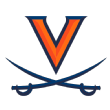
4. Virginia Cavaliers
Previous: 4
There wasn't much of a chance that Jay Huff was actually going to keep his name in the NBA draft, despite leaving it late. But Huff is a skilled big man and could play himself onto boards next season -- if he continues his production from late in the season. Over his final three games -- against Duke, Miami and Louisville -- Huff averaged 14.3 points, 7.7 rebounds and 4.0 blocks. The Cavaliers will once again be one of the nation's elite defensive teams; even in a "down" year, Virginia still ranked No. 1 in adjusted defensive efficiency and allowed only five opponents to top one point per possession. And this time around, Tony Bennett will have added scoring punch in the form of Marquette transfer Sam Hauser and ESPN 100 recruit Jabri Abdur-Rahim. Hauser is a sneaky pick for ACC Player of the Year honors, and Abdur-Rahim was one of the best pure scorers in the 2020 class. Virginia should be the preseason ACC favorite.
Projected starting lineup:
Kihei Clark (10.8 PPG, 5.9 APG)
Casey Morsell (4.0 PPG)
Tomas Woldetensae (6.6 PPG)
Sam Hauser (14.9 PPG, 7.2 RPG at Marquette)
Jay Huff (8.5 PPG, 6.2 RPG)

5. Iowa Hawkeyes
Previous: 5
Luka Garza is back, and so Iowa is looking more and more like a Final Four contender exiting the summer. Garza will be the Wooden Award favorite entering next season after finishing second to Dayton's Obi Toppin last season. After the improvement we've seen from the big man his first three seasons with the Hawkeyes, what can we expect from Garza as a senior? The best guess might be an expanded perimeter game. He attempted only 26 3-pointers in 11 nonconference games but upped it to 83 attempts in 20 Big Ten games. If Iowa is going to live up to its preseason expectations, however, it's not going to be solely because of Garza. It will have to come on the defensive end. The Hawkeyes were 12th out of 14 Big Ten teams last season in defensive efficiency, and the last time they finished inside the top 10 in the league at that end of the floor was 2016. That needs to change.
Projected starting lineup:
Jordan Bohannon (8.8 PPG, 3.3 APG)
CJ Fredrick (10.2 PPG)
Connor McCaffery (6.2 PPG, 4.0 APG)
Joe Wieskamp (14.0 PPG, 6.1 RPG)
Luka Garza (23.9 PPG, 9.8 RPG)

6. Wisconsin Badgers
Previous: 6
While Iowa, Illinois and Michigan State were anxiously waiting out the final days of the draft process, Wisconsin has had its roster and rotation pretty much set all offseason. And the Badgers might have fewer questions entering next season than those teams. The biggest thing for Greg Gard's group is going to be whether it can continue its hot shooting from the end of last season. Wisconsin won its final eight games, going from a team on the brink of its season collapsing to winning a share of the Big Ten title. During that final eight-game stretch, the Badgers shot 41% from 3-point range; for comparison, they shot 35.2% on the season. Brevin Pritzl started five of those final eight games, but he has graduated and probably will be replaced in the lineup by Micah Potter, who started three of those final eight games. Potter gives Wisconsin a brutal matchup problem for opponents: a 6-foot-10, 250-pound big man who shot 46.9% from 3-point range in Big Ten play and was the best defensive rebounder in the league.
Projected starting lineup:
D'Mitrik Trice (9.8 PPG, 4.2 APG)
Brad Davison (9.9 PPG, 4.3 RPG)
Aleem Ford (8.6 PPG, 4.4 RPG)
Nate Reuvers (13.1 PPG, 4.5 RPG)
Micah Potter (10.1 PPG, 6.2 RPG)
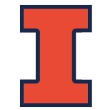
7. Illinois Fighting Illini
Previous: Unranked
There might not have been another team that saw as big a boost in its preseason expectations after the draft withdrawal deadline than Illinois, which got both Ayo Dosunmu and Kofi Cockburn back for next season. For much of the spring and early summer, it felt likely the Fighting Illini were going to lose at least one of the two -- and potentially both players. But Brad Underwood now has his two stars back, and Illinois has the pieces to compete for a Big Ten championship. Dosunmu will earn preseason All-American attention, and Cockburn is a dominant big man down low. Illinois returns five players who started at least 22 games last season, and there is going to be competition due to the additions of ESPN 100 guards Adam Miller and Andre Curbelo. While Iowa needs to improve defensively, Illinois is going to need to be more consistent on the offensive end -- especially shooting the ball from the perimeter. The Fighting Illini made just 29.3% of their 3s in Big Ten play.
Projected starting lineup:
Ayo Dosunmu (16.6 PPG, 3.3 APG)
Trent Frazier (9.1 PPG)
Adam Miller (No. 30 in ESPN 100)
Giorgi Bezhanishvili (6.8 PPG, 4.8 RPG)
Kofi Cockburn (13.3 PPG, 8.8 RPG)
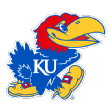
8. Kansas Jayhawks
Previous: 7
The Jayhawks would have entered last season's NCAA tournament as the favorite to cut down the nets, but without Devon Dotson and Udoka Azubuike, Bill Self will have to reinvent the starting lineup to find some scoring punch. Dotson and Azubuike carried Kansas at times offensively, allowing guys such as Marcus Garrett and Ochai Agbaji to settle in as complementary options. Are either Garrett or Agbaji ready to step up into that main role? Or will Self rely more heavily on newcomers Bryce Thompson and Tyon Grant-Foster, two of the more explosive scorers at the high school and junior college levels, respectively, last season? Garrett will also have to take on the added pressure of becoming the team's main point guard -- while also maintaining his status as arguably the nation's best individual defensive player. So there are certainly questions on the offensive end for the Jayhawks, but there are options. And there's also Self, who has earned the benefit of the doubt to piece it all together.
Projected starting lineup:
Marcus Garrett (9.2 PPG, 4.6 APG)
Bryce Thompson (No. 26 in ESPN 100)
Ochai Agbaji (10.0 PPG)
Tyon Grant-Foster (juco transfer)
David McCormack (6.9 PPG, 4.1 RPG)

9. Duke Blue Devils
Previous: 9
In what has become the norm for the Blue Devils the past few seasons, Mike Krzyzewski will have a young team on his hands in 2020-21. He's likely to start three freshmen, with Jeremy Roach running the show at point guard, five-star wing Jalen Johnson creating matchup issues on the perimeter and Mark Williams anchoring the frontcourt down low. But two returnees might hold the key to Duke's season -- and whether they can live up to the expectations they had coming out of high school. Matthew Hurt and Wendell Moore were both five-star recruits but each failed to carve out a consistent starting role as freshmen. Moore showed flashes, scoring 25 points against Wake Forest in late February, but he also missed six games because of injury and shuffled in and out of the starting lineup. Hurt was a key piece for most of the first three months of the season, but he played single-digit minutes four times in the final nine games. One of Moore or Hurt needs to take a big step forward.
Projected starting lineup:
Jeremy Roach (No. 18 in ESPN 100)
Wendell Moore (7.4 PPG)
Jalen Johnson (No. 12 in ESPN 100)
Matthew Hurt (9.7 PPG)
Mark Williams (No. 29 in ESPN 100)

10. Tennessee Volunteers
Previous: 10
Yves Pons was the last player to make his early-entry decision, taking it down to just a couple of hours before the deadline -- but his return to Knoxville cements Tennessee as the SEC favorite (depending on Olivier Sarr's waiver status). Though Rick Barnes would have had the personnel to replace Pons in the rotation, Pons is an elite defender and athlete who can make plays at both ends because of his physical tools. The Volunteers are the first team on this list that didn't make last season's NCAA tournament, but it's going to be a different-looking group than a year ago. Oregon transfer Victor Bailey Jr. and Sacred Heart graduate transfer E.J. Anosike are eligible, and ESPN 100 prospects Jaden Springer, Keon Johnson and Corey Walker are all joining the fold. That's on top of four returning starters. It's going to be very difficult to project the starting lineup from day one, but Barnes has enough depth to match anyone in the country.
Projected starting lineup:
Santiago Vescovi (10.7 PPG, 3.7 APG)
Jaden Springer (No. 16 in ESPN 100)
Josiah-Jordan James (7.4 PPG, 5.5 RPG)
Yves Pons (10.8 PPG, 5.4 RPG)
John Fulkerson (13.7 PPG, 5.9 RPG)
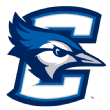
11. Creighton Bluejays
Previous: 12
Creighton had two players waiting until the final few days to decide to come back to college: Damien Jefferson and Denzel Mahoney. Neither was expected to keep his name in the draft, but it ensured the Bluejays had five very experienced pieces to slot into next season's starting lineup. The loss of Ty-Shon Alexander is going to sting, given his status as one of the best two-way players in the Big East, but sixth man Mahoney should be able to replace most of his scoring. Mahoney scored in double figures in 14 of 20 games, despite starting only once. Along with Mahoney, four players are back who started at least 28 games last season. Marcus Zegarowski, assuming he's 100% healthy, is a legitimate candidate for preseason Big East Player of the Year. Greg McDermott also has more options and size than a year ago, with the additions of Rati Andronikashvili and Ryan Kalkbrenner, and the return of Jacob Epperson from injury.
Projected starting lineup:
Marcus Zegarowski (16.1 PPG, 5.0 APG)
Denzel Mahoney (12.0 PPG)
Mitch Ballock (11.9 PPG, 5.3 RPG)
Damien Jefferson (9.4 PPG, 5.5 RPG)
Christian Bishop (8.6 PPG, 5.3 RPG)
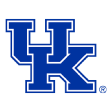
12. Kentucky Wildcats
Previous: 11
In an unusual twist, Kentucky didn't have much early-entry drama -- but it was only because nearly every Wildcats player made his decision much earlier in the offseason. Only Keion Brooks returns from a year ago, but John Calipari added experience in the form of Creighton graduate transfer Davion Mintz -- and potentially Wake Forest transfer Olivier Sarr. And it's Sarr who holds the key to how good this team could be next season. The third-team All-ACC big man is hoping for a waiver to play right away, but no decision has been made by the NCAA yet. If he's eligible, Kentucky is a borderline top-five team heading into the campaign. If not, there's still plenty of talent. Five-star freshmen Devin Askew, B.J. Boston and Terrence Clarke are all likely to start, with Boston expected to make the biggest impact due to his high-level scoring ability. But there will be questions down low if Sarr isn't eligible. Four-star Isaiah Jackson would be forced into a bigger role, and while he's an elite defensive player, it might be premature for him to start from day one.
Projected starting lineup:
Devin Askew (No. 24 in ESPN 100)
B.J. Boston (No. 6 in ESPN 100)
Terrence Clarke (No. 9 in ESPN 100)
Keion Brooks (4.5 PPG, 3.2 RPG)
Isaiah Jackson (No. 31 in ESPN 100)

13. Michigan State Spartans
Previous: 8
There were barely any early departures in the lead-up to deadline day, but unfortunately for Michigan State, the Spartans were one of the few to suffer a massive loss. Aaron Henry returned to East Lansing, as expected, but Xavier Tillman elected to remain in the draft. It wasn't too surprising, but it's going to be a tough task for Tom Izzo to replace him. Izzo has a few different potential scenarios. He could go with ESPN 100 big man Mady Sissoko, who has earned some positive offseason buzz, or he could opt for returnees Marcus Bingham and Thomas Kithier. Bingham started 16 games a season ago and has always shown a tantalizing skill set but hasn't produced consistently, and Kithier started the first five games of last season and provides physicality. If Izzo can figure out the post situation, the rest of the lineup looks very solid. Rocket Watts will be tasked with replacing Cassius Winston, and Gabe Brown, Henry and Malik Hall are all back -- and they add Marquette transfer Joey Hauser. There's also the chance Josh Langford can return in some form next season.
Projected starting lineup:
Rocket Watts (9.0 PPG)
Gabe Brown (6.8 PPG, 3.6 RPG)
Aaron Henry (10.0 PPG, 4.6 RPG)
Joey Hauser (9.7 PPG, 5.3 RPG at Marquette)
Mady Sissoko (No. 40 in ESPN 100)

14. Texas Tech Red Raiders
Previous: 13
Though Sarr's waiver situation has earned more attention, Mac McClung's status is almost as important in terms of next season's preseason rankings. The Georgetown transfer will have to play more disciplined at both ends of the floor if he's going to make the expected impact in Lubbock, but he also brings offensive aggression and individual ability the Red Raiders lacked at times last season. Chris Beard did receive positive news over the past few weeks, with VCU transfer Marcus Santos-Silva officially graduating and securing immediate eligibility. Santos-Silva will anchor the interior, providing Tech with an efficient inside scorer and elite rebounder. Five-star recruit Nimari Burnett will also help the offensive consistency, as should UNLV transfer Joel Ntambwe. The defensive end shouldn't be an issue; the Red Raiders have finished in the top 10 nationally in adjusted defensive efficiency in each of the past three seasons -- although with all the newcomers, it could take more time to jell.
Projected starting lineup:
Nimari Burnett (No. 21 in ESPN 100)
Kyler Edwards (11.4 PPG, 3.1 APG)
Terrence Shannon (9.8 PPG, 4.1 RPG)
Joel Ntambwe (11.8 PPG, 5.5 RPG at UNLV)
Marcus Santos-Silva (12.8 PPG, 8.9 RPG at VCU)

15. North Carolina Tar Heels
Previous: 14
North Carolina will have arguably the most talented and deepest post quartet in the country this season in returning starters Garrison Brooks and Armando Bacot, and five-star freshmen Day'Ron Sharpe and Walker Kessler. But it's Roy Williams' perimeter group that will dictate the Tar Heels' fate in 2020-21. Caleb Love should handle the point guard duties from day one. He's a five-star recruit and could have made the case as the best point guard in the 2020 class. On the wings, North Carolina will turn to returnees Anthony Harris, Leaky Black and Andrew Platek, and incoming freshmen R.J. Davis, Kerwin Walton and Puff Johnson. There's a lot of depth there, but who will step up and provide a bonafide threat from the perimeter? Harris is a solid two-way player and can also be a secondary ball handler, and Black started 31 games last season. Davis can fill it up quickly, and Johnson shoots it effectively. We're guessing the veterans start on the wings early on, but the newcomers will push for immediate minutes.
Projected starting lineup:
Caleb Love (No. 17 in ESPN 100)
Anthony Harris (6.8 PPG)
Leaky Black (6.5 PPG, 5.0 RPG)
Armando Bacot (9.6 PPG, 8.3 RPG)
Garrison Brooks (16.8 PPG, 8.5 RPG)

16. Oregon Ducks
Previous: 16
I'm higher on Oregon than most other rankings out there, and it's probably because I simply trust Dana Altman to figure things out. There's a lot of talent on paper in Eugene, and it could get even better if St. John's transfer LJ Figueroa gets a waiver to play right away. Figueroa was one of the more underrated players in the Big East, and he's a terrific scorer. Will Richardson and Chris Duarte will have to shoulder more of the scoring load with Payton Pritchard gone, and transfers Eugene Omoruyi (Rutgers) and Eric Williams (Duquesne) will help up front. The keys will be down low and at point guard. N'Faly Dante was one of the best rebounders and shot-blockers in the 2019 class, but he had a late start to his freshman season and probably will be more consistent with a full year in the program. At the point, Altman will turn to UNLV transfer Amauri Hardy or ESPN 100 recruit Jalen Terry. If Figueroa becomes eligible, Altman could use Richardson as the primary ball handler and go with a bigger, more scoring-oriented perimeter group.
Projected starting lineup:
Amauri Hardy (14.5 PPG, 3.3 APG at UNLV)
Will Richardson (11.0 PPG, 3.7 RPG)
Chris Duarte (12.9 PPG, 5.6 RPG)
Eugene Omoruyi (13.8 PPG, 7.2 RPG at Rutgers)
N'Faly Dante (5.8 PPG, 2.8 RPG)

17. West Virginia Mountaineers
Previous: 17
Though there are serious questions about West Virginia's offensive consistency, sometimes it helps to take a 30,000-foot view when it comes to preseason rankings. At the end of the day, the Mountaineers return four starters and eight rotation players from a team that would have earned somewhere around a 6-seed in last season's NCAA tournament -- while also adding a couple of newcomers who will be expected to contribute immediately. The lone departing starter, Jermaine Haley, will be replaced by sophomore Miles McBride, who could be poised for a breakout season after an impressive stretch during the middle of the season and a strong finish to the campaign. Derek Culver and Oscar Tshiebwe form one of the better post duos in the country, and Bob Huggins will always have plenty of depth. Keep an eye on frontcourt newcomers Jalen Bridges and Isaiah Cottrell. Bridges redshirted last season but can really shoot, and Cottrell was an ESPN 100 prospect who brings versatility.
Projected starting lineup:
Jordan McCabe (3.1 PPG)
Emmitt Matthews (6.3 PPG)
Miles McBride (9.5 PPG)
Oscar Tshiebwe (11.2 PPG, 9.3 RPG)
Derek Culver (10.4 PPG, 8.6 RPG)
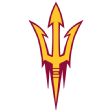
18. Arizona State Sun Devils
Previous: 15
Arizona State was one of the big winners of deadline day, when Remy Martin announced he was returning to Tempe after initially declaring for the NBA draft. We had factored in Martin's return to our previous rankings of the Sun Devils, so no, they're not dropping three spots because of Martin coming back. With him back in the fold, though, Bobby Hurley will have one of the most explosive perimeter groups in the country. Martin is a preseason All-American candidate, and Alonzo Verge is capable of huge scoring games despite starting only nine times last season. Then there's the addition of five-star guard Josh Christopher, who possesses one of the most complete scoring packages in the 2020 class. There are frontcourt questions, however, amplified by Romello White's decision to graduate and transfer to Ole Miss. Early word out of Tempe is that Hurley will need to find a way to get freshman Marcus Bagley on the floor. The younger brother of Marvin Bagley III of the Sacramento Kings, Marcus has continued to improve and could be the surprise of 2020-21.
Projected starting lineup:
Remy Martin (19.1 PPG, 4.1 APG)
Alonzo Verge (14.6 PPG)
Josh Christopher (No. 10 in ESPN 100)
Marcus Bagley (No. 33 in ESPN 100)
Kimani Lawrence (4.9 PPG, 2.6 RPG)
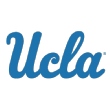
19. UCLA Bruins
Previous: Next in line
Chris Smith was one of the truly 50/50 decisions left on the board in the days leading up to the deadline, but he withdrew from the draft and returned to Westwood -- meaning Mick Cronin returns six players who started at least 14 games from a team that won 11 of its final 14 games to finish just one game from a Pac-12 regular-season title. That's on top of the addition of Kentucky transfer Johnny Juzang, who played sparingly as a freshman in Lexington but was a former top-50 recruit and can really shoot from the perimeter. Here's the thing to keep in mind, too. Last season, UCLA finished outside the top 100 nationally in adjusted defensive efficiency. In Cronin's final nine seasons at Cincinnati, his teams never finished outside the top 30 in that category. While the current roster in Westwood doesn't quite match most of those Cincinnati teams in terms of toughness and defensive buy-in, a full year under Cronin is very likely to bring an improvement at that end of the floor. We already saw that last season, as UCLA allowed only six of its final 14 opponents to score more than one point per possession -- after nine of their first 17 opponents hit that mark.
Projected starting lineup:
Tyger Campbell (8.3 PPG, 5.0 APG)
Johnny Juzang (2.9 PPG at Kentucky)
Jaime Jaquez (8.9 PPG, 4.8 RPG)
Chris Smith (13.1 PPG, 5.4 RPG)
Jalen Hill (9.0 PPG, 6.9 RPG)

20. Texas Longhorns
Previous: 18
Shaka Smart brings back every point from last season, while also adding a legitimate potential lottery pick in Greg Brown. It's entirely unclear how he's going to dole out minutes and starts, especially early in the season, given that eight players started at least 10 games last season and Brown is probably going to be a locked-in starter. Matt Coleman, Courtney Ramey, Jase Febres and Jericho Sims started nearly every game they were available and healthy to play, but Texas went on its late-season surge with Febres and Sims sidelined and Andrew Jones, Kai Jones and Royce Hamm in the starting lineup. Kai Jones could be the player to watch next season for the Longhorns. He's a high-ceiling frontcourt player who came on late in his high school career and finished last season with 20 points and seven rebounds in a loss to Oklahoma State. A frontcourt pairing of Jones and Brown would feature two players who can run the floor and beat teams down the court in transition. Smart probably would have to up the tempo with those two on the floor together.
Projected starting lineup:
Matt Coleman (12.7 PPG, 3.4 APG)
Courtney Ramey (10.9 PPG)
Andrew Jones (11.5 PPG)
Greg Brown (No. 8 in ESPN 100)
Jericho Sims (9.7 PPG, 8.2 RPG)
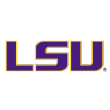
21. LSU Tigers
Previous: Unranked
Had Will Wade gone two for three on deadline day, it probably would have been considered a victory. But the LSU head coach received good news from all three players who left their withdrawal decisions until the final hours: Ja'Vonte Smart, Trendon Watford and Darius Days. All three players are headed back to Baton Rouge and LSU is back in the top 25. Watford was the biggest surprise, although he could really boost his stock by taking on more of a go-to role during his second season with the Tigers. Smart will run the show from the point guard spot, although incoming freshman Eric Gaines had a strong senior season and will provide a different dimension. Days is a versatile frontcourt piece who can create matchup problems. Keep an eye on five-star recruit Cam Thomas, who was one of the best pure scorers in the 2020 class and will be counted on to put up points early and often next season. LSU has finished first and second, respectively, in the SEC the past two seasons and shouldn't fall too far next season.
Projected starting lineup:
Ja'Vonte Smart (12.5 PPG, 4.2 APG)
Cam Thomas (No. 22 in ESPN 100)
Charles Manning (7.9 PPG)
Trendon Watford (13.6 PPG, 7.2 RPG)
Darius Days (11.1 PPG, 6.8 RPG)
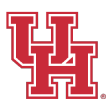
22. Houston Cougars
Previous: 23
On paper, Houston's 2019-20 season didn't blow anyone away. The Cougars did win a share of the AAC regular-season championship, but they were 23-8 and lost three of their final six games to end the season. But look a little closer and variance clearly didn't go Kelvin Sampson's way last season. Houston was 0-5 in games decided by two points or fewer, with three of those losses coming in the final five weeks of the season. Even turning around two of those games would make the Cougars' 2019-20 campaign look a lot more attractive on paper. I have faith in Sampson's crew this season, though. DeJon Jarreau, Quentin Grimes, Caleb Mills and Marcus Sasser are all back to form one of the deepest perimeter groups in the country, and ESPN 100 guard Tramon Mark and Idaho transfer Cameron Tyson (13.5 PPG) enter the fold. Fabian White's injury hurts them up front, but Brison Gresham provided quality minutes last season and Arkansas transfer Reggie Chaney could apply for a waiver to play right away.
Projected starting lineup:
DeJon Jarreau (9.0 PPG, 3.7 APG)
Marcus Sasser (8.1 PPG)
Quentin Grimes (12.1 PPG)
Caleb Mills (13.2 PPG)
Brison Gresham (2.9 PPG, 3.5 RPG)

23. Ohio State Buckeyes
Previous: 20
The Big Ten is going to be the best conference in the country next season, so a projected fifth-place finish in the league would still make the Buckeyes a borderline top-20 team in the country -- and if they stay healthy, that might look low. Three starters are gone from a season ago, but CJ Walker, Duane Washington and Kyle Young are all back after starting at least 15 games, and E.J. Liddell looked the part, especially late in the season, when he scored at least 12 points in three of his last six games and had 17 points and 11 rebounds against Illinois in March. The key will be the arrival of two transfers: Justice Sueing (14.3 PPG, 6.0 RPG at California) and Seth Towns (16.0 PPG, 5.7 RPG at Harvard). Sueing sat out last season in Columbus, but he will be expected to provide immediate scoring punch, and Towns has struggled with injuries for most of the last two seasons but earned Ivy League Player of the Year honors in 2017-18. If Towns is close to his 2017-18 form, he could be the Buckeyes' best offensive player. One of those two will have to step up as a go-to-guy, though.
Projected starting lineup:
C.J. Walker (8.7 PPG, 3.5 APG)
Duane Washington (11.5 PPG)
Seth Towns (16.0 PPG, 5.7 RPG at Harvard)
EJ Liddell (6.7 PPG, 3.8 RPG)
Kyle Young (7.5 PPG, 5.8 RPG)
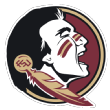
24. Florida State Seminoles
Previous: 21
The Seminoles have spent most of the offseason building one of the nation's elite recruiting classes in 2021, with five players -- including four top-50 prospects -- already in the fold. But that's still a year away. Before then, Leonard Hamilton should have another top-25 team in Tallahassee. It will be a different group than last season, with first-rounders Devin Vassell and Patrick Williams gone and Trent Forrest, one of the best two-way guards in the ACC, graduating. But Hamilton is reloading with elite prospect Scottie Barnes and Sardaar Calhoun, considered one of the best junior college players in the country last season. And while the departures will hurt, Florida State has been one of the deepest teams in college basketball over the past several seasons, with players ready to take over the available minutes. Former ESPN 100 prospect Balsa Koprivica could be poised for a breakout season up front, and M.J. Walker will look to build on his double-figure scoring average last season. Barnes will be the key, though. He's a versatile impact player at both ends of the floor and will dictate how good Florida State can be.
Projected starting lineup:
M.J. Walker (10.6 PPG)
Sardaar Calhoun (JUCO transfer)
Scottie Barnes (No. 4 in ESPN 100)
RaiQuan Gray (6.0 PPG, 3.8 RPG)
Malik Osborne (6.0 PPG, 4.9 RPG)

25. Florida Gators
Previous: 24
With Illinois, UCLA and LSU rising into the rankings, a few teams deserving of a spot in the preseason rankings had to drop out -- but Florida keeps its position. The Gators didn't live up to the preseason hype from a season ago, as some people (perhaps even the writer of this column) predicted a potential Final Four run and national championship for Mike White's group. To be fair, the Gators could have put it together during the NCAA tournament, but that appeared unlikely. Gone from that team are Andrew Nembhard (transferred to Gonzaga) and Kerry Blackshear Jr. (graduated), with Cleveland State transfer Tyree Appleby and former top-50 prospect Omar Payne expected to fill those spots in the starting lineup. Also keep an eye on Samson Ruzhentsev, who burst onto the scene as a high school senior and could make an impact earlier than originally expected. Former McDonald's All American Tre Mann will also look for a breakout sophomore season after an inconsistent role during his first campaign in Gainesville.
Projected starting lineup:
Tyree Appleby (17.2 PPG, 5.6 APG at Cleveland State)
Noah Locke (10.6 PPG)
Scottie Lewis (8.5 PPG, 3.6 RPG)
Keyontae Johnson (14.0 PPG, 7.1 RPG)
Omar Payne (3.8 PPG, 3.6 RPG)
Next in line
Rutgers Scarlet Knights (previous: 22)
Arkansas Razorbacks (previous: 25)
Indiana Hoosiers (previous: next in line)
Richmond Spiders (previous: next in line)
Louisville Cardinals (previous: next in line)
Dropped out
Stanford Cardinal (previous: 19)
Michigan Wolverines (previous: next in line)
